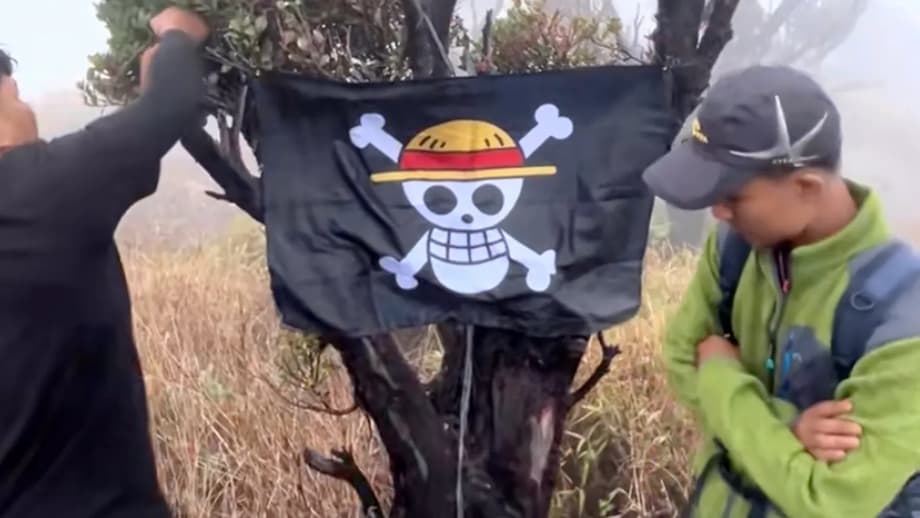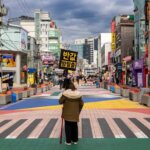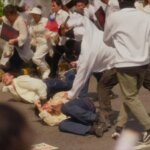The Rise of the One Piece Pirate Flag as a Protest Symbol in Indonesia
In the weeks leading up to Indonesia’s 80th Independence Day, a striking new symbol began to appear across the archipelago: the black pirate flag from the Japanese anime One Piece, emblazoned with a skull wearing a straw hat. Traditionally, the red-and-white national flag dominates public spaces during this patriotic season. But this year, the so-called Jolly Roger—the emblem of Monkey D. Luffy and his Straw Hat Pirates—has fluttered from homes, vehicles, and even flagpoles, sparking a national debate about democracy, dissent, and the power of pop culture.
- The Rise of the One Piece Pirate Flag as a Protest Symbol in Indonesia
- Why the One Piece Flag? Understanding the Symbolism
- From Online Trend to National Movement
- Government Response: Crackdown or Creative Expression?
- Pop Culture and Protest: A New Language of Dissent
- Legal and Social Implications: Where Is the Line?
- Generational Divide and the Future of Protest in Indonesia
- In Summary
The phenomenon, which started as an online trend, quickly spilled into the real world. Social media platforms filled with images of the flag, and demand for physical banners surged, with some flag sellers reporting thousands of orders. For many Indonesians, especially the youth, the One Piece flag has become a creative yet pointed way to express discontent with government policies and to call for greater freedom and justice.
Why the One Piece Flag? Understanding the Symbolism
One Piece is one of the world’s most popular manga and anime franchises, created by Eiichiro Oda in 1997. Its story follows Monkey D. Luffy and his crew of pirates as they journey to find the legendary treasure, “One Piece,” while challenging corrupt authorities and fighting for freedom. The Straw Hat Pirates’ flag—a skull with a straw hat—represents not just piracy, but rebellion, hope, and the quest for justice against oppressive powers.
For Indonesian fans, the symbolism resonates deeply. As mural artist Radinal Muhtar explained, the anime’s themes of courage, resistance, and the fight against injustice mirror the frustrations many Indonesians feel about their own government. Economic challenges, job scarcity, and concerns over democratic backsliding have left many, especially young people, feeling marginalized and unheard.
“The red-and-white flag is too sacred for us to raise right now, at a time when many people are still colonized by those in power,” wrote one social media user, echoing a sentiment shared widely online.
By flying the Jolly Roger, protestors say they are not rejecting Indonesia itself, but rather expressing a desire for a more just and free society. The flag, in this context, becomes a banner of hope and a call for change.
From Online Trend to National Movement
The One Piece flag protest gained momentum after President Prabowo Subianto urged citizens to proudly display the national flag ahead of Independence Day. Instead, some Indonesians chose to raise the pirate flag, seeing it as a subtle yet powerful form of dissent. The movement quickly went viral, with netizens sharing photos and memes, and even redesigning official Independence Day logos in the style of the anime.
Artists and students played a key role in spreading the symbol. In Bekasi, artist Kemas Muhammad Firdaus painted murals of the straw-hatted skull as a protest against government corruption and unemployment. Student groups, long a force in Indonesian activism, embraced the flag as a rallying point, linking it to earlier protests against budget cuts and increased military involvement in civilian life.
Flag sellers like Dendi Christanto in Central Java reported a surge in orders, sometimes overwhelming their capacity. The trend’s popularity on social media only fueled its spread, making the Jolly Roger a ubiquitous sight in both urban and rural areas.
Government Response: Crackdown or Creative Expression?
The government’s reaction to the One Piece flag protest has been mixed and, at times, contradictory. Some officials, including Deputy House Speaker Sufmi Dasco Ahmad and Coordinating Politics and Security Minister Budi Gunawan, condemned the movement as divisive and even treasonous. They warned that flying the pirate flag alongside the national flag could undermine national unity and violate laws protecting state symbols.
“We have received information from security agencies that there are indeed [systematic] efforts to divide the nation’s unity [through the One Piece movement],” said Deputy Speaker Ahmad, as quoted by Antara News.
Authorities in several provinces threatened legal action against those displaying the flag in ways deemed disrespectful to the national flag, citing Law No. 24 of 2009, which mandates that the red-and-white flag must always be given the position of honor. In some cases, police confiscated flags and questioned individuals about their motives.
However, other officials, including President Prabowo’s office and Deputy Home Affairs Minister Bima Arya Sugiarto, took a more measured stance. They acknowledged the flag as a form of creative expression and a natural phenomenon in a democracy, as long as it did not diminish the significance of the national flag or violate the constitution.
“Regarding the One Piece flag trend, we see it as a way for people to express themselves and convey their expectations, which we accept as input,” said Deputy Minister Sugiarto.
Legal experts and rights groups, including Amnesty International Indonesia, have defended the protestors, arguing that freedom of expression is guaranteed by the constitution and that displaying fictional or cultural flags is not illegal as long as national symbols are respected.
Pop Culture and Protest: A New Language of Dissent
The use of the One Piece flag as a protest symbol is part of a broader trend in which young people across Asia use pop culture references to express political dissent. In Thailand, for example, students have adopted the Hunger Games salute and Harry Potter imagery to criticize the monarchy and government. Such symbols offer a way to channel frustration and critique authority in a manner that is creative, nonviolent, and often safer than direct confrontation.
Sociologist Bagong Suyanto described the One Piece flag movement as a “massive movement cutting across social classes and ages, driven by feelings of marginalization.” He noted that the flag’s popularity reflects both the influence of Japanese anime in Indonesia and the desire for new forms of civic engagement.
For many, the Jolly Roger is more than just a cartoon emblem—it is a statement of rebellion, a demand for accountability, and a symbol of hope for a better future. As one food seller, Andri Saputra, put it, “We want to be free to express ourselves. The flag is just a cartoon from Japan, but it means something to us.”
Legal and Social Implications: Where Is the Line?
The controversy over the One Piece flag has sparked important debates about the meaning of national symbols, the limits of free expression, and the role of protest in a democracy. While Indonesian law does not explicitly ban the display of fictional or cultural flags, it does require that the national flag be given precedence and prohibits any act that insults or diminishes its honor.
Some officials have warned that flying the Jolly Roger alongside or above the national flag could be interpreted as a criminal offense, carrying penalties of up to five years in prison or a substantial fine. However, legal scholars like Herdiansyah Hamzah argue that as long as the One Piece flag does not surpass the national flag in height or size, there is no violation of the law.
“Displaying the One Piece flag is a form of public criticism protected by the constitution, which guarantees freedom of expression, including through symbols,” said Hamzah.
Rights groups and civil society organizations have called on the government to respect citizens’ rights to peaceful protest and to avoid overreacting to what is essentially a symbolic act. They argue that treating a cartoon flag as a threat to national security only validates the protestors’ concerns about government overreach and the erosion of democratic freedoms.
Generational Divide and the Future of Protest in Indonesia
The One Piece flag protest has also exposed a generational divide in Indonesian society. Older generations, who remember the struggles for independence and the sacrifices made to establish the nation, often view the red-and-white flag as sacred and are wary of any act that might be seen as disrespectful. Younger Indonesians, on the other hand, are more likely to see the Jolly Roger as a legitimate form of political expression and a way to hold leaders accountable.
This generational tension is not unique to Indonesia. Around the world, young people are increasingly turning to creative and unconventional forms of protest to make their voices heard. In Indonesia, where student activism has a long and storied history—from the 1998 demonstrations that toppled President Suharto to recent protests against budget cuts and military involvement in civilian life—the use of pop culture symbols represents a new chapter in the ongoing struggle for democracy and justice.
Whether the wave of pirate flags will fade after Independence Day or continue as a form of protest remains to be seen. What is clear, however, is that the One Piece flag has become more than just an anime reference—it is now a powerful statement about the state of Indonesian democracy and the hopes and frustrations of its people.
In Summary
- The One Piece pirate flag has become a viral symbol of protest in Indonesia, especially among youth, ahead of the country’s 80th Independence Day.
- Inspired by the anime’s themes of resistance and freedom, Indonesians are using the flag to express dissatisfaction with government policies and concerns about democracy.
- The movement has sparked a national debate, with some officials condemning the flag as divisive or even treasonous, while others defend it as creative expression protected by law.
- Legal experts and rights groups argue that displaying the flag is not illegal as long as the national flag is respected.
- The protest reflects broader trends in youth activism and the use of pop culture in political dissent across Asia.
- The controversy highlights ongoing debates about civic engagement, freedom of expression, and the meaning of national symbols in Indonesia.












